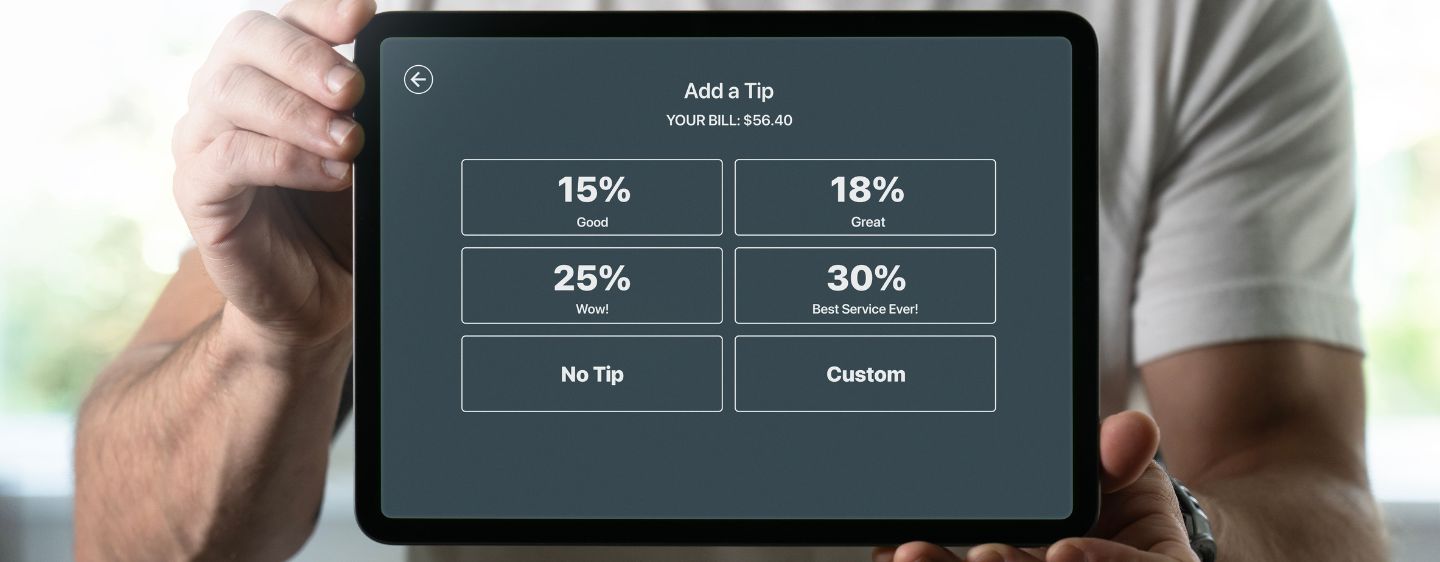
the screen turn:
navigating the rise of tipping culture
In today's fast-paced world, where quick digital transactions are normal, there's a new situation that has become common in our daily lives: the screen turn. It's that moment when you're faced with a screen, asking for a tip, just after you've completed a transaction. What was once reserved for restaurant servers and taxi drivers has now expanded to a wide array of service providers, from baristas to online retailers. Tipping is on the rise across the U.S.
You've paid, now what?
Picture this: you've just ordered your morning coffee, and as you reach for your wallet to pay, the screen swivels around toward you, displaying options for tipping. It's become so routine, but it raises questions. Should you tip for a service that traditionally didn't require it? How much is appropriate? And what about those moments when you're faced with a screen turn in unexpected places?
Tipping: The Feelings That Ensue
The truth is, tipping culture has gone beyond its traditional boundaries, and it's now a part of many of our experiences as consumers. Fast food restaurants, grocery stores, online retailers, stadiums – the list goes on. It seems that wherever there's a transaction, there's an opportunity to tip. But why? And what does this mean for both consumers and service providers alike?
For consumers, the screen turn can cause a range of emotions – confusion, guilt, or even annoyance. It's an added pressure, one that can leave us questioning our social etiquette. After all, tipping was once seen as a gesture of appreciation for great service, not an expectation for every transaction. Yet, as more businesses adopt tipping prompts, it's easy to feel compelled to give, even when the service provided may not warrant it.
Put Yourself In Their Shoes
On the flip side, for service providers, the rise of tipping culture presents both opportunities and challenges. On one hand, it offers a chance to supplement income in industries where wages may be low. Tipping can incentivize workers to provide better service, knowing that their efforts impact their earnings. However, it also prompts workers to rely on customers rather than wages from their employers. And for businesses, tipping can be a double-edged sword – while it may boost employee satisfaction, it also adds another layer to the customer experience, potentially leading to dissatisfaction.
Where Do We Go From Here?
As tipping becomes increasingly prevalent in our daily transactions, it's important to approach it with mindfulness. As consumers, we can educate ourselves on tipping practices and advocate for fair wages and treatment of workers. We can also save it for instances of exceptional service rather than blindly following prompts. And for businesses, transparency is key – ensuring that tipping policies are clear, and that employees are compensated fairly for their work.
As we navigate this changing culture, let's strive to tip with thoughtfulness, compassion, and an awareness of the impact our actions have on those who serve us. After all, in a world where kindness is currency, every gesture matters – even if it's just a tap on a screen.
